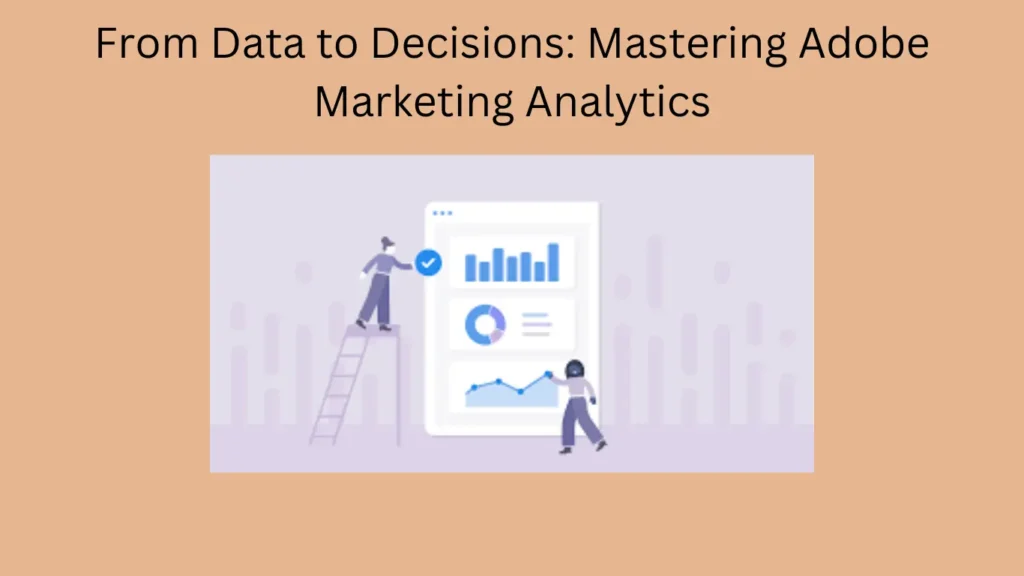In the realm of digital marketing, making informed decisions based on reliable data is crucial for success. Adobe Marketing Analytics offers powerful tools and insights that empower marketers to harness data effectively. This guide is designed to help you master Adobe Marketing Analytics, from understanding its core functionalities to implementing strategies that drive business growth.
Understanding Adobe Marketing Analytics
Adobe Marketing Analytics is a comprehensive platform that integrates and analyzes data from various digital channels. It provides marketers with actionable insights into customer behavior, campaign performance, and overall marketing effectiveness.
Key Features of Adobe Marketing Analytics
- Unified Data Integration
- What It Offers: Integrates data from websites, mobile apps, social media, and other sources into a single platform.
- Benefits: Provides a holistic view of customer interactions and marketing efforts for comprehensive analysis.
- Advanced Segmentation
- What It Offers: Allows segmentation of audiences based on demographics, behaviors, and preferences.
- Benefits: Enables targeted marketing campaigns tailored to specific customer segments, improving engagement and conversion rates.
- Real-Time Analytics
- What It Offers: Provides real-time insights into campaign performance and customer interactions.
- Benefits: Allows marketers to monitor and optimize campaigns promptly, responding to market changes effectively.
- Predictive Analytics
- What It Offers: Uses machine learning to forecast future trends and customer behavior.
- Benefits: Helps marketers anticipate market shifts, plan strategies proactively, and optimize marketing investments.
- Customizable Reporting
- What It Offers: Enables creation of personalized dashboards and reports to visualize key metrics and performance indicators.
- Benefits: Facilitates easy interpretation and communication of insights across teams, supporting data-driven decision-making.
Implementing Adobe Marketing Analytics Effectively
Steps to Master Adobe Marketing Analytics
- Integration and Setup
- Ensure seamless integration with existing digital platforms and data sources.
- Customize settings and configurations to align with business goals and KPIs.
- Data Collection and Analysis
- Implement robust data collection strategies to gather relevant marketing data.
- Use built-in tools and features to analyze data and extract actionable insights.
- Campaign Optimization
- Monitor campaign performance in real-time and identify areas for improvement.
- Conduct A/B testing and optimization based on data-driven insights.
- Personalization and Customer Engagement
- Utilize segmentation and predictive analytics to personalize marketing messages.
- Map out customer journeys and optimize engagement at each touchpoint.
- Continuous Improvement
- Regularly review performance metrics and adjust strategies based on insights.
- Stay updated with new features and best practices to maximize the platform’s potential.
Conclusion
Mastering Adobe Marketing Analytics empowers marketers to transform data into strategic decisions that drive business growth. By leveraging its advanced features such as unified data integration, segmentation, real-time analytics, predictive insights, and customizable reporting, businesses can gain a competitive edge in today’s dynamic digital landscape. Implement these strategies to unlock the full potential of Adobe Marketing Analytics and achieve sustainable success in your marketing endeavors.
For further Inquires Contact Us
FAQs
What is Adobe Marketing Analytics, and why is it important for marketers?
Answer: Adobe Marketing Analytics is a platform that integrates and analyzes marketing data to provide actionable insights. It helps marketers optimize campaigns, understand customer behavior, and drive business growth.
How does Adobe Marketing Analytics integrate data from different digital channels?
Answer: It consolidates data from websites, mobile apps, social media, and more into a unified platform. This integration offers a comprehensive view of marketing performance and customer interactions.
What role does segmentation play in Adobe Marketing Analytics?
Answer: Segmentation allows marketers to categorize audiences based on demographics, behaviors, and preferences. It enables personalized marketing strategies that enhance engagement and conversion rates.
How can real-time analytics benefit marketing campaigns?
Answer: Real-time analytics provide immediate insights into campaign performance and customer interactions. Marketers can make timely adjustments to optimize campaigns for better results.
How does predictive analytics in Adobe Marketing Analytics help businesses?
Answer: Predictive analytics uses machine learning to forecast trends and customer behavior. It empowers marketers to anticipate market shifts, plan strategies proactively, and allocate resources effectively.

